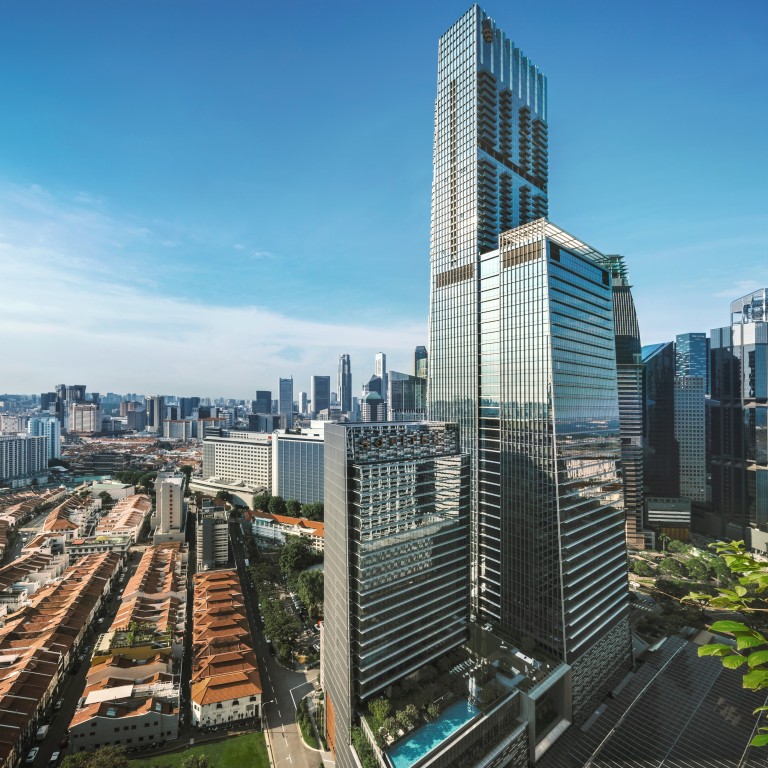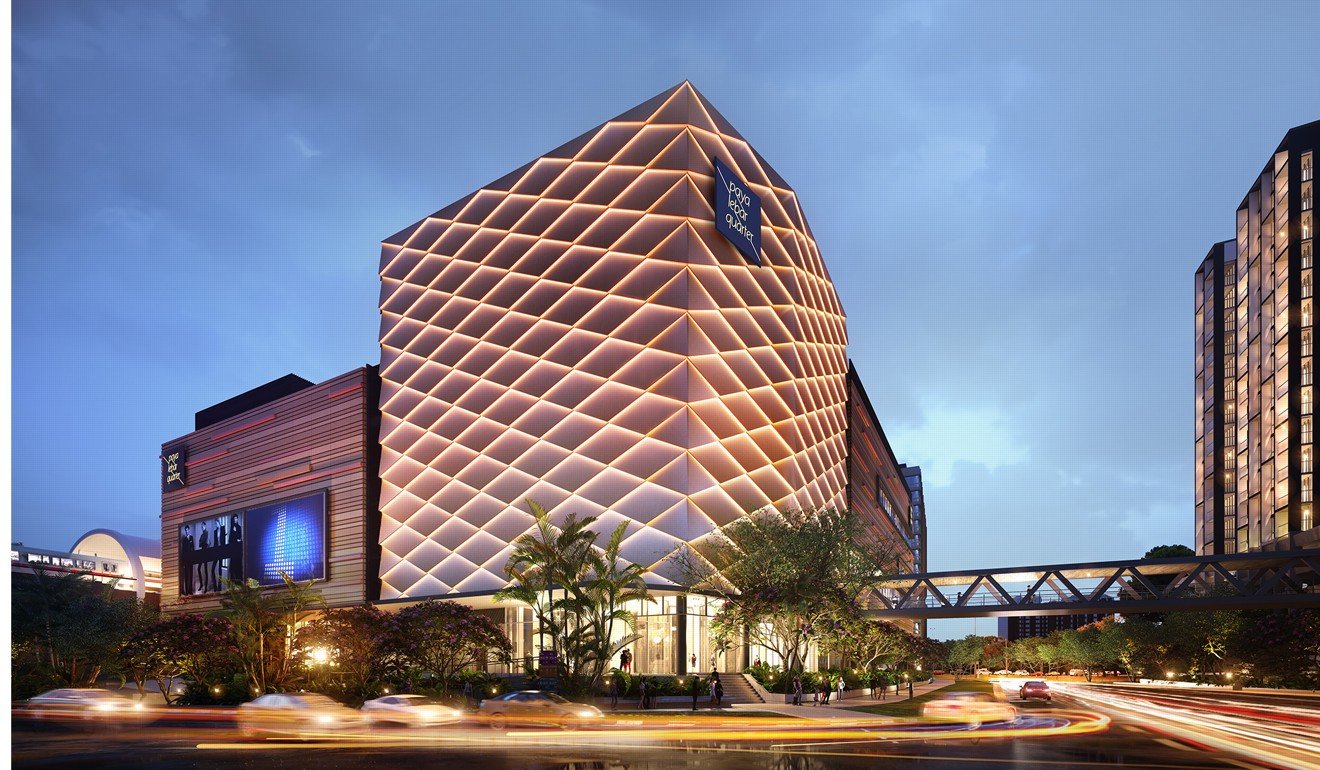
In Singapore, can monster malls scare retail woes away?
- Instead of shrinking from the growth of e-commerce, developers are doubling down with billion-dollar shopping malls
- Some success has been found with this approach, particularly projects close to train stations, but the future of physical retail is uncertain
Swiping through online deals on her iPhone is one of Chua Jia Ying’s favourite ways to shop.
“But sometimes you just need to get out of the home, and window shop,” said the civil servant, 29.
The mall, which houses 200 shops, is part of a giant mixed-use development spanning four hectares, or about six soccer fields. The project, by Australia-headquartered property firm Lendlease, includes three high-spec office towers and 429 condominium units.
“This precinct will ultimately house 10,000 workers and residents,” said Lendlease group chief executive officer and managing director Steve McCann during a speech at PLQ’s opening ceremony on October 24.
From Indians to Chinese, Singapore feels the strain of immigration
In 2016, the island nation’s tallest building, the S$3.2 billion (US$2.3 billion) Guoco Tower, which sits on top of a railway station, opened in the heart of the central business district (CBD). Its developer GuocoLand paid a further S$1.62 billion for a 2.1-hectare, 99-year leasehold site on Beach Road, where the Singapore firm plans to build a mixed development consisting of offices, condominium units and a shopping mall.

BRINGING MALLS TO THE PEOPLE
Retail sales in Singapore fell for eight consecutive months this year, from February to September, even as the retail vacancy rate held steady at about 7.5 per cent between the year’s second and third quarters.
Part of the problem has been the economy. Growth has slowed to a crawl, with the economy expected to expand by between 0.5 per cent and 1 per cent this year. With their incomes stretched, shoppers are pulling back.
But a far bigger problem for most retailers has been the rise of e-commerce. People are now buying everything from coconuts to computers on e-commerce sites such as Lazada, Amazon and Taobao.
Mall developers have tried to stem the tide by bringing in new restaurants, hosting performances and even conducting free yoga classes. The buzzword is “experiential”, and a recent paper by real estate consultancy Edmund Tie & Co said these activities had helped boost footfall, maintain high occupancy rates and shore up earnings.
In wealthy Singapore, about 1,000 people sleep rough every night
However, Knight Frank Singapore executive chairman Danny Yeo said tenants providing experiences such as rock-climbing and exercise classes might not be the first choice of landlords, who prefer to fill their spaces with food, beverage and fashion outlets that pay higher rent. “When such tenants are not forthcoming, then there is a need to embrace newer ideas such as gyms and experiential uses and hope that these will help drive traffic,” he said. “But at least they fill the mall up.”
There is another tactic to counter the dwindling number of visitors. Instead of bringing people to the malls, developers are now bringing malls to the people.
“The integrated model is the way to go,” said June Chua, Cushman & Wakefield’s head of leasing. “It is a congregation point to also benefit the community and residents in the area.”
Offices and residential properties become natural catchment areas for retail, while retail and offices are key reasons people buy condominium units in integrated developments.
Another draw is that many of these billion-dollar projects are built near or even atop major train stations, making accessibility a key feature.
“The growing trend of integrated developments in non-CBD locations arises from the government’s drive to bring work closer to home to relieve congestion in the CBD,” said Tay Huey Ying, head of research and consultancy for JLL in Singapore, adding that such projects were a catalyst for development.
Indeed, mixed-use behemoths are sprouting up from the suburban heartland in Singapore’s north to the CBD down south, and the mega-development idea is unlikely to slow down any time soon.
“We definitely have an eye out on a couple of schemes here in Paya Lebar, [and] other places coming up like Kampong Bugis, Jurong Lake District in the future,” said Lendlease Asia chief executive officer Tony Lombardo.
He said the firm had failed in its bid for a mixed-use project in Holland Village, also a city-fringe area – showing how intense competition is for prime sites in land-scarce Singapore. “We see the mixed-use [concept] as the better area for us to play in,” Lombardo said.
If Singapore is so wealthy, why do its citizens feel stuck?
Singapore-based property giant CapitaLand, which operates malls across Asia, has 19 in the Lion City – many of them integrated developments at train stations. The latest to be added to its portfolio is the upcoming S$2.2 billion redevelopment of Liang Court in Clarke Quay, which it is building with another local developer, CDL.
Developers are also adapting their retail strategies. Instead of resisting disruption, many are now bending to the flow of progress.
Valerie Wong, general manager for asset management at GuocoLand Singapore, dismissed the idea that technology and retail were incompatible. She noted the explosion of food deliveries in recent years, which has affected restaurant sales. “Rather than fight the food delivery companies, we created more dedicated areas for riders to pick up orders, benefiting our F&B stores so that it was a win-win situation,” Wong said.
Partly due to this, gross turnover for retail units at Guoco Tower, which mainly comprise F&B outlets, increased about 20 per cent from 18 months ago.

REVERBERATIONS AND RESERVATIONS
But concerns remain over the retail landscape. The sector still faced an uncertain future, said Knight Frank’s Yeo. “Things may not be as sweet in the next few years. You can sense many big developers are very cautious and worried that the market may not be strong enough for too long.”
More worrying, according to experts, is a potential oversupply of physical retail with the influx of large integrated developments.
Alan Cheong, Savills executive director for research and consultancy, said: “My concern about more and more integrated developments is that it may soon reach a critical point – beyond which it starts to siphon away consumer expenditure from larger clusters such as those in town centres and malls.”
With developers also focusing on large projects, smaller malls are likely to find it harder to secure tenants.
Said Cushman and Wakefield’s Chua: “Maybe they can choose not to play in the same league as the big boys and go after similar tenants. They can find a niche for themselves, such as in IT products.”
‘Hype, smoke, and hot air’ clouding Singapore real estate
“Once the formula is repeated often enough, every other station will have two to three mixed-use developments around it. We may start to see vacant shops or dodgy traders appearing below residential blocks, even before e-commerce takes away the retailers,” said Ku Swee Yong, chief executive of real-estate brokerage International Property Advisor.
Despite these concerns, the monster mall trend is set to rumble on, with billions already ploughed into upcoming projects. While the spectre of an oversaturated retail scene looms, for consumers like Chua Jia Ying, more variety is a good thing.
“At this rate, I can visit a new mall every weekend,” she said. “It’s easy to get tired of the older malls.” ■










